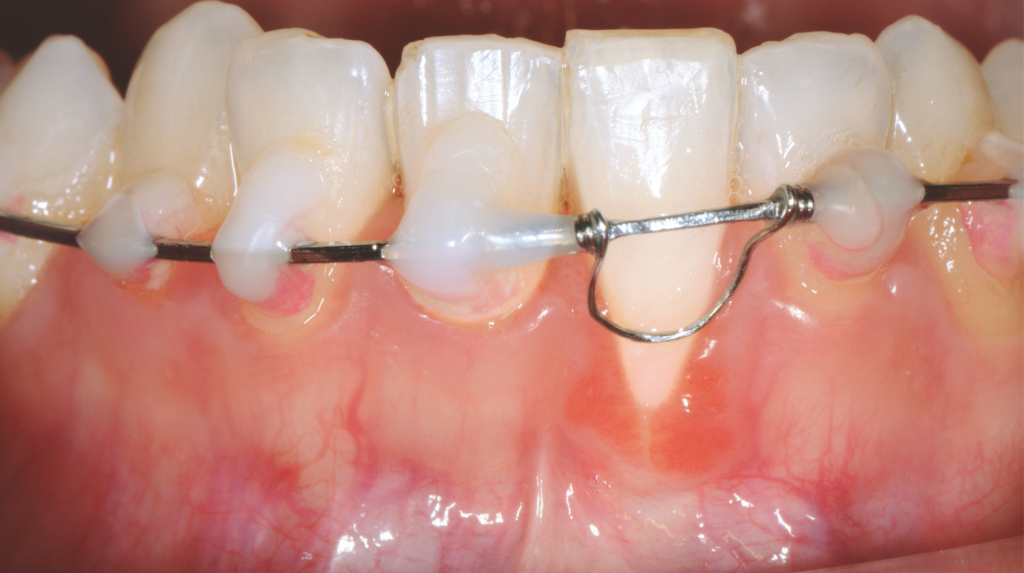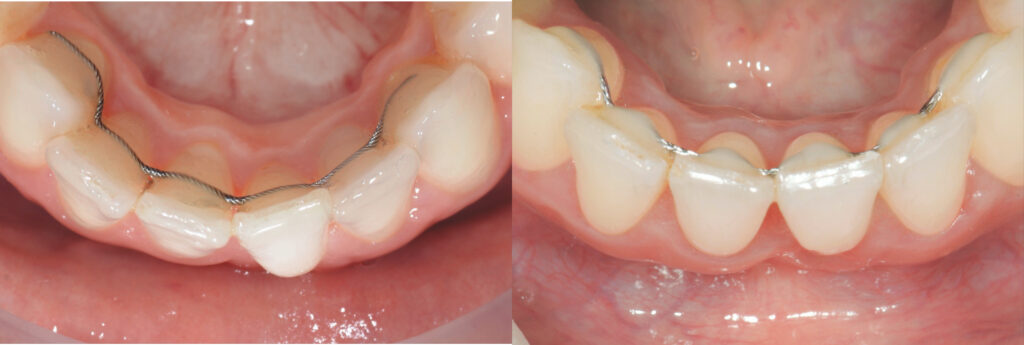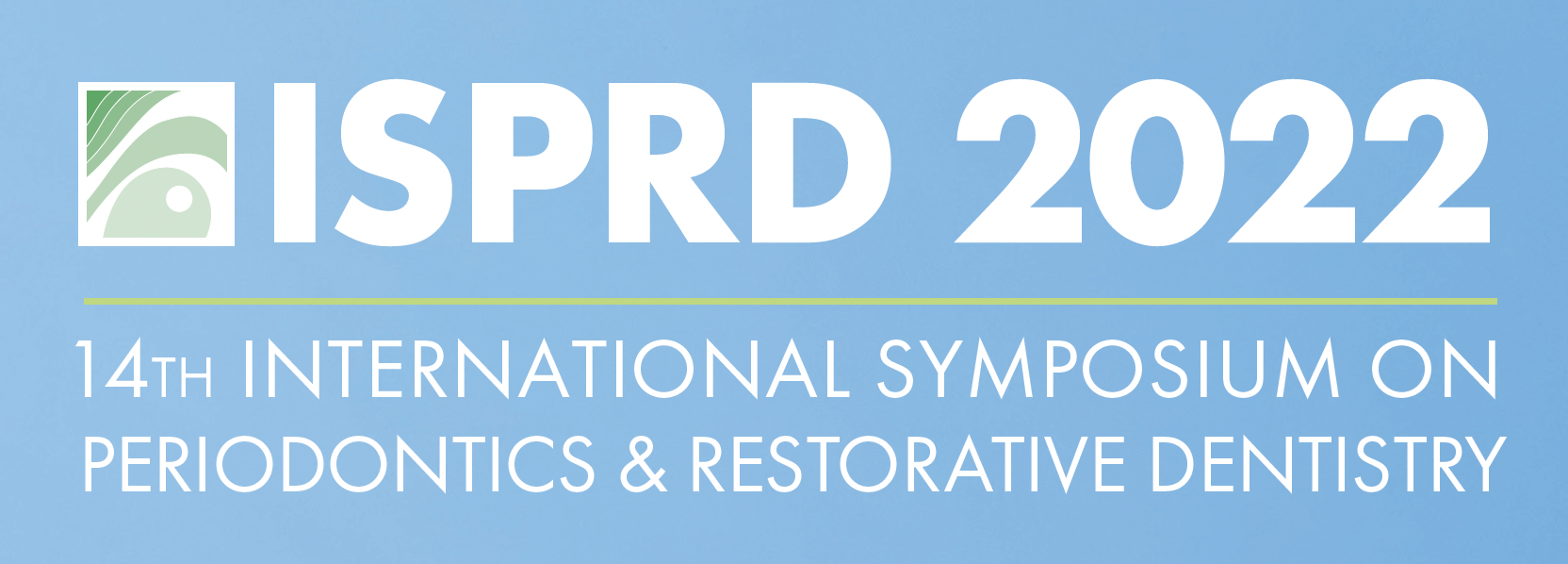Gingival recession is one of the most common problems dentists face, and bone dehiscence is one of many predisposing factors. When the bone dehiscence and recession are located in the mandibular incisors, which have a naturally thin buccal bone plate, you may need to layer treatments and get a little creative in your approach.
That’s exactly what Drs Mauro Fadda, Martina Stefanini, Alexandra Rendón, Matteo Sangiorgi, Lorenzo Tavelli, and Giovanni Zucchelli did. The authors implemented a novel orthodontic treatment device—the FZ Root Torque Controller, designed by two of the authors—on a single tooth to correct the root displacement and make the recession treatment more predictable. The twist? Only the tooth with buccal displacement was shifted, and the device can even be used by dental professionals not specialized in orthodontics.

Simply put, a steel archwire is bonded on the buccal surface of the mandibular anterior teeth using composite resin, and an orthodontic tube is adhered to the most coronal part of the lingual surface of the tooth needing treatment. When a round archwire is inserted into the tube (with the archwire splinted lingually on the adjacent teeth), the tube becomes the center of rotation, and the tooth can rotate freely around the wire. A Warren spring was inserted in the buccal archwire, pushing against the most apical portion of the tooth’s crown.
Over 5 to 6 months, the root position was corrected in 20 patients without ever affecting the adjacent teeth, and the Miller Class III and IV recessions were reduced to Class I and II defects. Teeth were then treated with a vertically-coronally advanced flap and connective tissue graft to cover the recession. At 1 year postsurgery, complete root coverage was seen in 90% of cases, and patients reported nearly perfect esthetic satisfaction.

The positive results of this orthodontic-mucogingival approach highlight the importance of interdisciplinary work. Borrowing elements from other treatment methods can pave the way to new treatments that increase predictability, save money, and reduce treatment time, just like Dr Fadda et al accomplished. Read more about their approach in the January/February issue of PRD here.
Meeting specialists from all over the world is a fantastic way to learn new strategies and broaden your clinical knowledge to help solve complex problems. Come join us in Boston this June for the 14th International Symposium on Periodontics & Restorative Dentistry, where we’ll host almost 90 speakers from all over the world lecturing on a wide array of topics. You never know—you might be inspired to create the next novel treatment approach.

